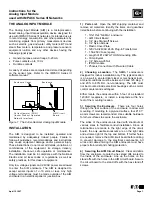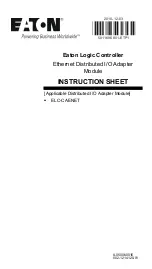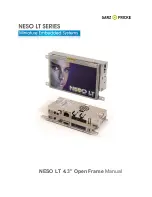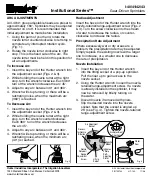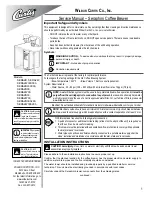
© National Instruments
|
4-39
Hardware-timed acquisitions have several advantages over software-timed acquisitions:
–
The time between samples can be much shorter.
–
The timing between samples is deterministic.
–
Hardware-timed acquisitions can use hardware triggering.
Hardware-timed operations can be buffered or hardware-timed single point
(HWTSP). A buffer is a temporary storage in computer memory for to-be-transferred
samples.
–
Buffered—In a buffered acquisition, data is moved from the DAQ device’s onboard
FIFO memory to a PC buffer using DMA before it is transferred to application
memory. Buffered acquisitions typically allow for much faster transfer rates than
HWTSP acquisitions because data is moved in large blocks, rather than one point at a
time.
One property of buffered I/O operations is the sample mode. The sample mode can be
either finite or continuous:
•
Finite sample mode acquisition refers to the acquisition of a specific,
predetermined number of data samples. Once the specified number of samples
has been read in, the acquisition stops. If you use a reference trigger, you must
use finite sample mode.
Note
(NI USB-6356/6366 and PXIe-6378 Devices)
Some X Series devices
internally transfer data in sample pairs, as opposed to single samples. This
implementation allows for greater data throughput. However, if an acquisition on
these devices acquires an odd number of total samples, the last sample acquired
cannot be transferred.
To ensure this condition never occurs, NI-DAQmx adds a background channel for
finite acquisitions that have both an odd number of channels and an odd number of
samples-per-channel. The background channel is also added when performing any
reference-triggered finite acquisition. Data from the background channel is only
visible when reading in RAW mode.
For maximum efficiency in bus bandwidth and onboard FIFO use, use an even
number of samples-per-channel or an even number of channels for finite acquisitions,
so the background channel is not added.
•
Continuous acquisition refers to the acquisition of an unspecified number of
samples. Instead of acquiring a set number of data samples and stopping, a
continuous acquisition continues until you stop the operation. Continuous
acquisition is also referred to as double-buffered or circular-buffered acquisition.
If data cannot be transferred across the bus fast enough, the FIFO becomes full.
New acquisitions overwrite data in the FIFO before it can be transferred to host
memory, which causes the device to generate an error. With continuous
operations, if the user program does not read data out of the PC buffer fast enough
to keep up with the data transfer, the buffer could reach an overflow condition,
causing an error to be generated.
Summary of Contents for PCIe-6323
Page 1: ...PCIe 6323...


































